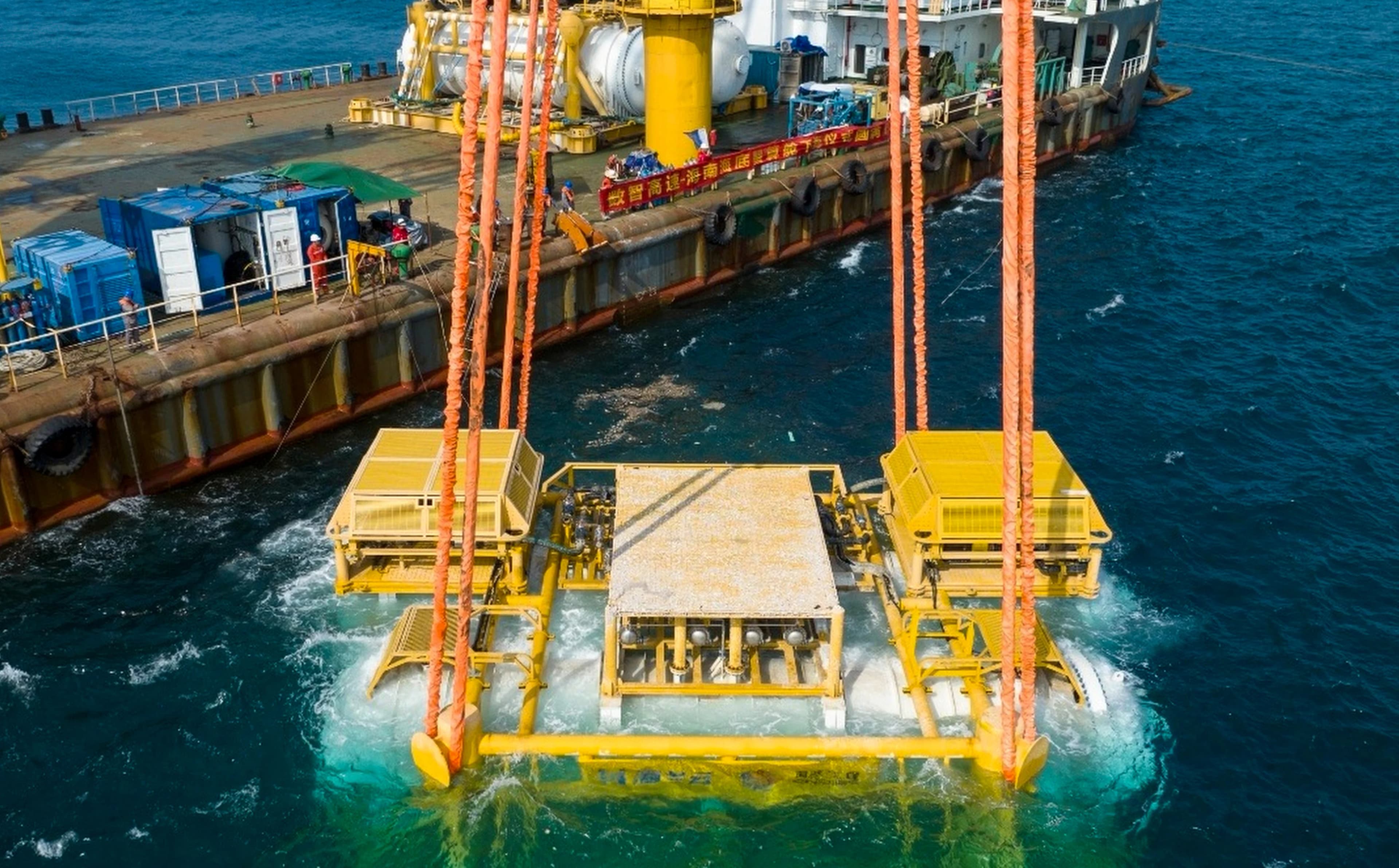China’s Underwater Space Station: Deep-Sea Dominance, Research & Global Competition

Introduction
China is developing an underwater space station, often called the "Deep-sea Space Station" (深海空间站), as part of its ambitious plan to explore and exploit the ocean’s depths. This project—akin to an underwater Tiangong space station—aims to establish a permanent human presence in the deep sea for scientific, military, and resource mining purposes.
This initiative places China in direct competition with the U.S., Japan, Europe, and Russia in a new era of deep-sea geopolitics. Below, we explore the station’s capabilities, research goals, mining ambitions, and how it’s reshaping global power dynamics.
1. China’s Underwater Space Station: Key Features
Technical Specifications
Depth Capability: 3,000–11,000 meters (full ocean depth, including the Mariana Trench).
Design: Modular pressurized habitat with docking for submersibles.
Power Supply: Likely nuclear-powered (China has developed compact reactors for deep-sea use).
Life Support: Advanced oxygen recycling, temperature control, and high-pressure resistance.
Communication: Acoustic and laser-based systems for real-time data transmission.
Purpose & Strategic Goals
Scientific Research: Study deep-sea life, geology, and climate impacts.
Resource Mining: Extract rare-earth elements, cobalt, and polymetallic nodules.
Military Expansion: Strengthen submarine surveillance and undersea infrastructure control.
2. Scientific Exploration: What China Is Studying
A. Deep-Sea Ecosystems & Extremophiles
Biodiversity Mapping: Discovering new species in the hadal zone (6,000m+).
Extremophiles Research: Studying organisms that survive extreme pressure and darkness.
Potential for new antibiotics, cancer drugs, and industrial enzymes.
Climate Impact Studies: Tracking deep-sea carbon storage and ocean currents.
B. Geological & Energy Research
Hydrothermal Vents: Studying mineral-rich "black smokers" for copper, zinc, and gold.
Methane Hydrates: Experimental extraction for potential future energy supply.
Seabed Tectonics: Monitoring underwater earthquakes for tsunami prediction.
3. Deep-Sea Mining: China's Quest for Oceanic Resources
China is aggressively pursuing deep-sea mining to secure critical minerals essential for its technological and military advancement. The focus is on three key resources found in the ocean's depths.
Polymetallic Nodules – These potato-sized mineral clusters contain nickel, cobalt, copper, and manganese, crucial for electric vehicle batteries and electronics. China has secured exploration rights in the mineral-rich Clarion-Clipperton Zone of the Pacific Ocean.
Cobalt-Rich Crusts – Found coating underwater mountains and seamounts, these deposits contain high concentrations of cobalt, platinum, and rare-earth elements vital for aerospace technology and smartphones. China is actively exploring Pacific seamounts for these resources.
Seafloor Massive Sulfides – Formed around hydrothermal vents, these mineral deposits contain valuable copper, zinc, gold, and silver. China has been surveying potential mining sites in the Indian Ocean and near Okinawa.
However, this mining push faces significant challenges. Environmentalists warn that deep-sea mining could devastate fragile ecosystems that have taken millennia to develop. The International Seabed Authority is struggling to establish global regulations, with China pushing for faster approvals while Western nations advocate for stricter environmental protections.
4. The Global Race for Underwater Dominance
The competition for deep-sea resources has become a new arena for geopolitical rivalry, with several major players vying for control.
China currently leads the race with the most exploration licenses from the International Seabed Authority and cutting-edge submersible technology. Its Jiaolong and Fendouzhe deep-sea vehicles have already reached the Mariana Trench's deepest points. However, this dominance has raised concerns about environmental protection and fair resource distribution.
The United States, while technologically advanced, has been slower to secure mining rights, instead relying on partnerships with allies like the UK. American companies are developing alternative mining technologies, but the lack of direct ISA contracts puts the U.S. at a disadvantage in the short term.
Japan and South Korea have made significant investments in deep-sea exploration, driven by their need to reduce dependence on Chinese mineral imports. Both nations are focusing on developing advanced robotics for sustainable mining operations near their territorial waters.
European nations, particularly the UK and Belgium, are taking a more cautious approach. While they hold valuable mining licenses, they emphasize environmental safeguards and sustainable practices. The EU is pushing for comprehensive regulations before large-scale mining begins.
Russia has focused its efforts on the Arctic seabed, where melting ice is revealing new resource opportunities. Russian submersibles and nuclear-powered underwater vehicles give Moscow unique capabilities in these frigid waters.
The military implications of this underwater competition are equally significant. Control of deep-sea resources could translate into geopolitical leverage, while underwater stations may serve dual purposes for surveillance and strategic positioning. The coming decade will likely see increased tensions as nations scramble to secure their claims to the ocean floor's vast mineral wealth.
This new "Great Game" of the 21st century is playing out beneath the waves, with profound implications for global power dynamics, environmental sustainability, and technological development. The choices made today about deep-sea exploration and exploitation will shape international relations and ecological preservation for generations to come.
5. Future Scenarios: What’s Next?
- China’s Dominance (2030s) → Controls critical minerals, outpacing the U.S. and Europe.
- Western Countermeasures → AUKUS, Quad alliances push back with alternative mining projects.
- Environmental Collapse → Unregulated mining triggers a deep-sea ecological disaster.
- Underwater → U.S. vs. China submarine clashes over resource hotspots.
Conclusion
China’s underwater space station is more than a scientific endeavor—it’s a strategic power play for control of the ocean’s resources. As deep-sea mining becomes a reality, the world faces a critical choice: compete for dominance or collaborate to protect the last frontier.